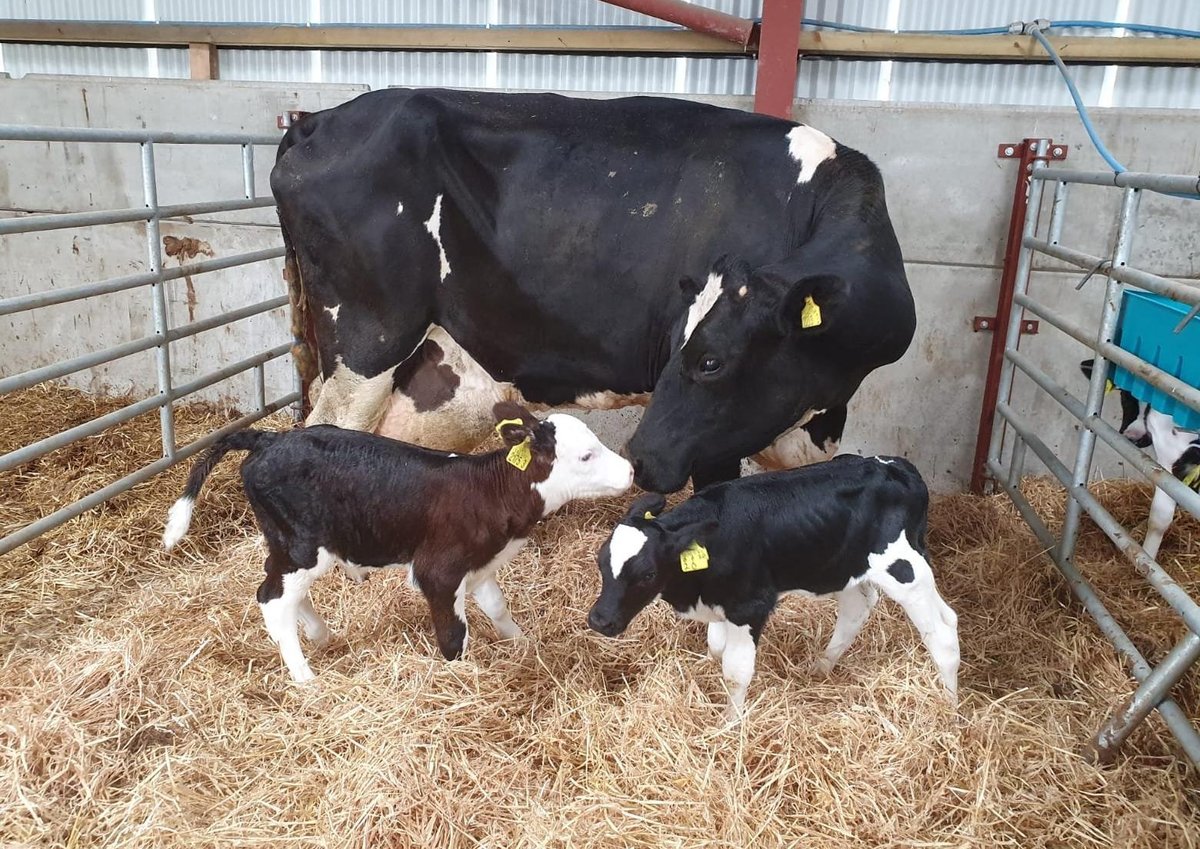Colostrum (either dam’s or mixed colostrum from first milking of older cows) fed to calves as soon after birth as possible (ideally within 30 minutes and certainly within 4 hours) protects against disease. Early feeding of colostrum at 4 to 5 percent of birth weight is necessary because:
- Newborn calves have no antibodies to provide natural protection;
- Calves’ ability to absorb immunoglobulins (the disease protection component) is substantially reduced after 24 -36 hours;
- Colostrum is a concentrated source of ready available nutrients.
The economy of heifer rearing
Major cost of heifer rearing is feed and labour. The cost of rearing a heifer to calf at 24 months is comparable to the value of that heifer. Feeding forage after 6 weeks is important for growth of the rumen.
According to the Agriculture and Horticulture Development Board (AHDB), at birth, the rumen is small, undeveloped and does not contribute to digestion. “It must develop before it can digest forages. Concentrates and water intake are the most important factors for rumen development.”
“If stimulated early on, a calf’s rumen can start to function from as early as five days of age. Most calves are actively ruminating by 28 days. Eating concentrates and drinking water provide rumen microbes with the nutrients they need to grow and multiply. After three weeks of eating starter concentrate, there will be enough rumen microbes to ferment feed and supply the calf with energy.”
The first estrus in heifers is determined by weight and size. For well fed heifers, this occurs before 12months and when 40% of its mature weight. Underfed heifers ovulate but signs are suppressed, resulting into cow poor conception rates. Heifer gaining weight at breeding time generally shows more definite signs of estrus. Overweight heifers require more servings per conception.
Calves (0-3 months):
Total (87.5 kg) concentrate requirements during this period, in addition to 465 litres of milk, are as shown in the schedule below. To achieve optimal growth rate, it is recommended to supply high quality roughage, concentrate, mineral licks/block and water adlib, accompanied with routine de-worming.
Milk and Concentrate feeding schedule:
| Age in weeks | Milk per day (ltr) | Concentrate 18 % Crude Protein | Roughage (High quality hay) Ad lib |
| 1 Week |
Colostrum |
||
| Day (1st Week) |
6 |
Handful |
Hay |
| Day (4-7} 1st Week |
6 |
0.5 |
Hay |
| Week 2 |
6 |
0.5 |
Hay |
| Week 3 |
5 |
0.75 |
Hay |
| Week 4 |
5 |
0.75 |
Hay |
| Week 5 |
5 |
1 |
Hay |
| Week 6 |
5 |
1 |
Hay |
| Week 7 |
5 |
1 |
Hay |
| Week 8 |
5 |
1 |
Hay |
| Week 9 |
5 |
1.5 |
Hay |
| Week 10 |
4 |
1.5 |
Hay |
| Week 11 |
4 |
1.5 |
Hay |
| Week 12 |
3 |
1.5 |
Hay |
| Week 13 |
3 |
1.5 |
Hay |
| Week 14 |
2 |
1.5 |
Hay |
| Week 15 |
2 |
1.5 |
Hay |
| Total |
465 kg |
87.5 |
Weaners (3 to 15 months):
The protein content in the feed after weaning to 1 yr should be 16 per cent, and from to 1 year to 16 months should be 14 per cent Crude Protein.
This is why your dairy cow eats more but keeps producing less milk
During this stage of heifer rearing, avoid overfeeding with concentrates because over conditioned heifers produce less milk in their later life than those reared in moderate level of nutrition.
Did you love the story? You can also share YOUR story and get it published on Bizna Click here to get started.




